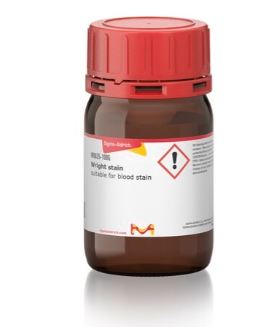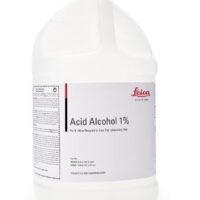Description
General description
Wright′s Stain solution is commercially available and is generally used in hematology. Its preparation involves heating methylene blue with sodium bicarbonate and combining the mixture with eosin. It is alkaline, hence, its concentration is continuously changing due to the progressive oxidizing action of the alkali. Therefore, Giemsa′s stain is added to preserve the azurophilic properties of polychrome dyes.
Application
Wright′s Stain is mainly used for the staining of peripheral blood smears and bone marrow smears.
- It is also used for G-banding and helps in the analysis of poorly spread metaphases.
- It has been used to study the cytogenetics of human hematopoietic cells.
- It has also been employed in the karyotyping of human embryonic stem cells.
- It is also used in the staining of chromosomes.
- It is used for the exudate analysis of white blood cell concentration.
Reported to be superior to May-Grunwald Stain in blood staining.
Features and Benefits
The purified dyes in Wright′s Stain eliminate inconsistent staining and yield reproducible lot-to-lot chromogenic responses.
PROPERTIES
Assay
≤4% (HPLC)
Pack Size
25g
form
powder
concentration
≤4% (HPLC)
color
dark green
solubility
methanol: 10 mg/10 mL
suitability
suitable for blood stain
application(s)
diagnostic assay manufacturing
hematology
histology
storage temp.
room temp
Preparation Note
Prepared using polychromed (oxidized) methylene blue and eosin Y.





Reviews
There are no reviews yet.